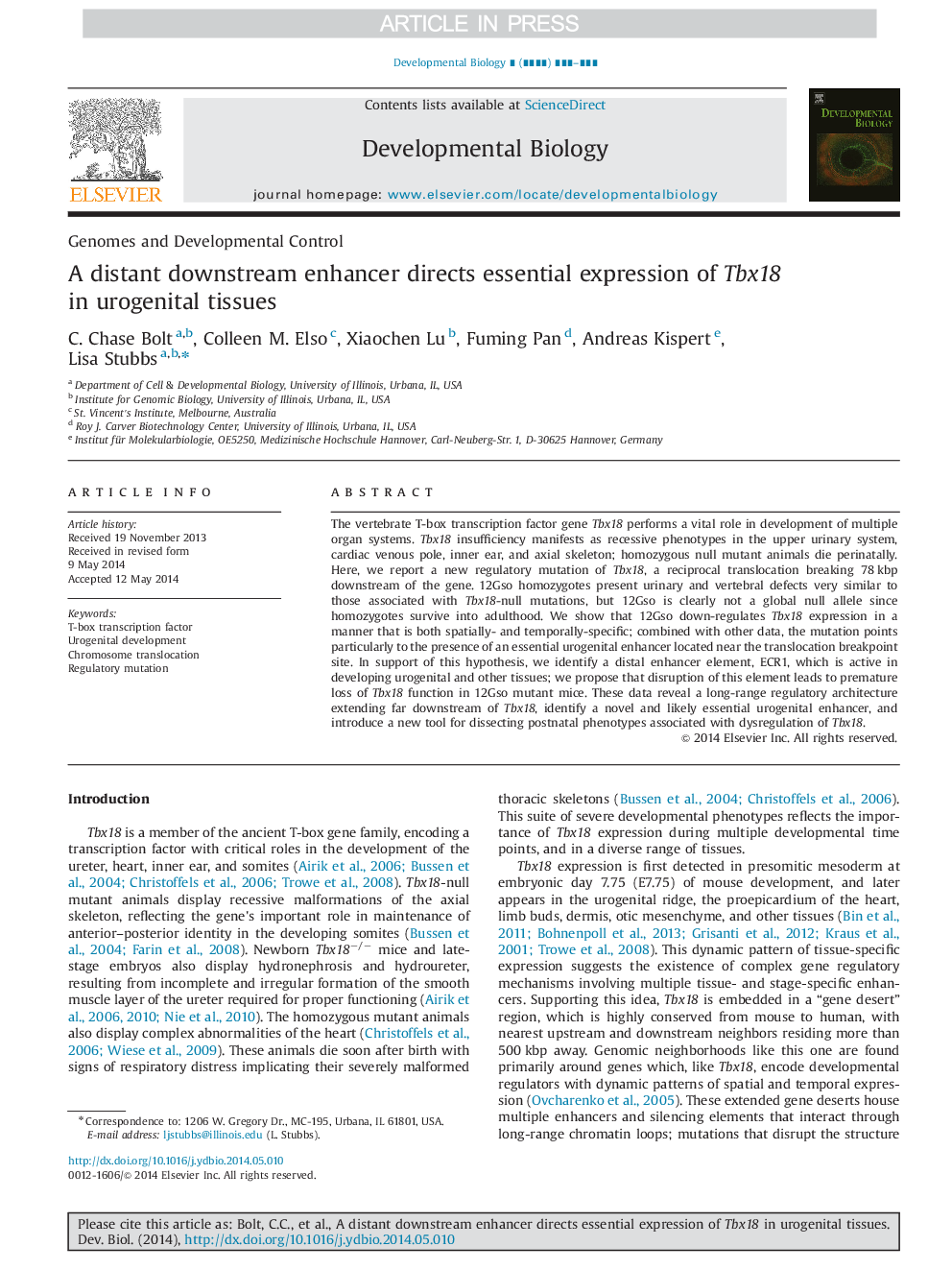| Article ID | Journal | Published Year | Pages | File Type |
|---|---|---|---|---|
| 10931603 | Developmental Biology | 2014 | 11 Pages |
Abstract
The vertebrate T-box transcription factor gene Tbx18 performs a vital role in development of multiple organ systems. Tbx18 insufficiency manifests as recessive phenotypes in the upper urinary system, cardiac venous pole, inner ear, and axial skeleton; homozygous null mutant animals die perinatally. Here, we report a new regulatory mutation of Tbx18, a reciprocal translocation breaking 78Â kbp downstream of the gene. 12Gso homozygotes present urinary and vertebral defects very similar to those associated with Tbx18-null mutations, but 12Gso is clearly not a global null allele since homozygotes survive into adulthood. We show that 12Gso down-regulates Tbx18 expression in a manner that is both spatially- and temporally-specific; combined with other data, the mutation points particularly to the presence of an essential urogenital enhancer located near the translocation breakpoint site. In support of this hypothesis, we identify a distal enhancer element, ECR1, which is active in developing urogenital and other tissues; we propose that disruption of this element leads to premature loss of Tbx18 function in 12Gso mutant mice. These data reveal a long-range regulatory architecture extending far downstream of Tbx18, identify a novel and likely essential urogenital enhancer, and introduce a new tool for dissecting postnatal phenotypes associated with dysregulation of Tbx18.
Related Topics
Life Sciences
Biochemistry, Genetics and Molecular Biology
Cell Biology
Authors
C. Chase Bolt, Colleen M. Elso, Xiaochen Lu, Fuming Pan, Andreas Kispert, Lisa Stubbs,
